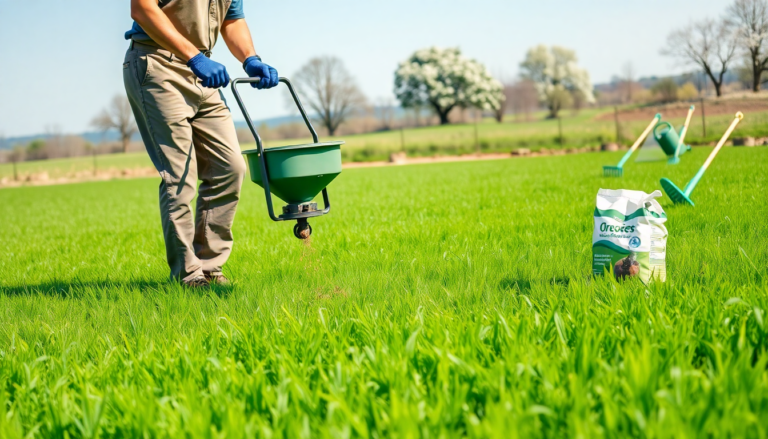Argomenti trattati
Creating a lush, vibrant lawn is a dream for many homeowners, whether you have a sprawling yard or a cozy patch of grass. Not only does a well-maintained lawn improve your property’s curb appeal, but it also boosts its overall value. So, when exactly is the best time to plant grass seed? Knowing the timing can be a game-changer for the health of your lawn. Let’s dive into some expert insights on the optimal planting periods and effective care methods.
Understanding the Seasonal Dynamics of Grass Planting
In the world of lawn care, timing really is everything. Each type of grass has its own preferred planting season, which often aligns with local climate conditions. While you can technically plant grass seed at various times throughout the year, sticking to specific seasonal guidelines can significantly enhance your success rate.
If you’re considering cool-season grasses, the fall months are your best bet. Experts, especially those familiar with the Northeast, recommend late summer to early fall (think August to September) for sowing. During this time, competition from pesky weeds is lower, allowing your newly planted grass the chance to establish itself without the struggle. Plus, the cooler temperatures that follow summer help foster healthier root development before winter arrives.
On the flip side, warm-season grasses thrive when planted in early spring. Here, soil temperature is key; aim to start seeding when the ground hits about 65 degrees Fahrenheit. This timing protects your grass from late frosts and sets it up to flourish in the warmer months ahead. Isn’t it fascinating how nature works in sync with our gardening efforts?
Expert Recommendations on Grass Varieties
When you’re picking out grass varieties, it’s crucial to choose ones that match your regional climate. For instance, if you’re in the Northeast, cool-weather grasses like Kentucky bluegrass, perennial ryegrass, and fescues come highly recommended for their hardiness in cooler temps. Experts advocate for seeding in the fall, just before frost sets in, for the best outcomes.
Meanwhile, if you live in the southern states, you’ll want to focus on warm-season grasses such as Bermuda, Bahia, and St. Augustine. These varieties are designed to thrive in the heat and generally require less water than their cool-season cousins. Pro tip: Implementing effective watering strategies like early morning irrigation can help minimize water waste due to evaporation, keeping your grass healthy even during the hottest summer days.
And don’t overlook the benefits of organic materials in your lawn care routine. Incorporating compost as a natural fertilizer can boost soil quality and enhance water retention, creating a nurturing environment for your grass seed to flourish.
Practical Tips for Planting Grass Seed
Ready to plant? Start by prepping your lawn. This means leveling any uneven patches, tackling weeds, and clearing away debris that could block seed growth. A clean, even surface ensures better seed distribution and reduces the risk of pooling water that might drown your precious seeds.
Mixing your grass seed with potting soil can also help improve planting efficiency. A good rule of thumb is to use one part seed to two parts soil, which aids in even distribution and minimizes those annoying bare patches. A garden spreader can make this process smoother, while a rake helps level the area post-seeding.
Once the seeds are in place, watering becomes crucial. Lightly water the area to settle the seeds without creating puddles that could wash them away. Consistent moisture is essential, but be careful not to oversaturate. Regularly checking your soil moisture levels will help you strike the right balance.
Monitoring Growth and Ensuring Longevity
After seeding, patience is your best friend. Typically, new grass takes about four to six weeks to establish itself properly. During this time, consider following the ‘one-third rule’ when mowing—allow the grass to grow to one-third higher than your desired height before cutting. This method promotes stronger turf and healthier growth. Who knew mowing could be so strategic?
Additionally, protecting your lawn from excessive foot traffic is vital, especially during winter dormancy. Compacted soil can stunt root growth, so varying your activity across different areas can help prevent bare patches from forming as temperatures rise in spring.
In summary, the secret to a thriving lawn lies in understanding seasonal dynamics, selecting the right grass varieties, and implementing effective planting and care strategies. By following expert recommendations and staying diligent with your lawn care routine, you can cultivate a vibrant outdoor space that enhances your home’s aesthetic appeal. Ready to get started on your lawn transformation?

